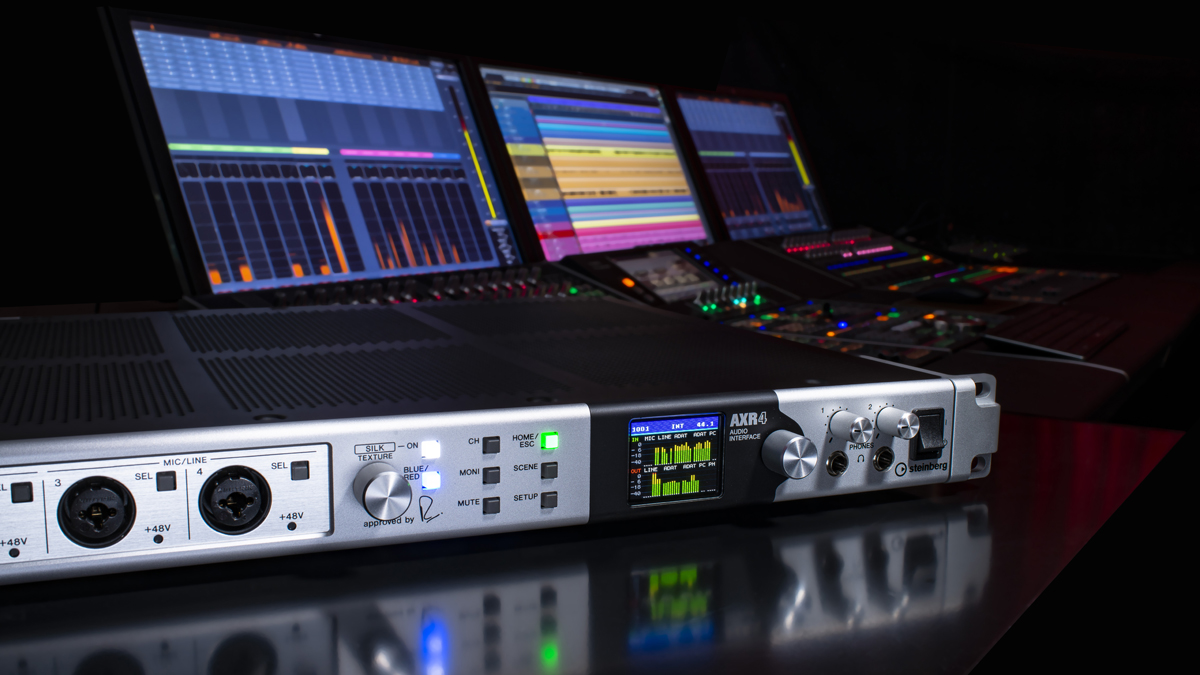How to set up a live synth multitrack recording session with the Steinberg AXR4
Hands-on with Steinberg's flagship audio interface

Steinberg isn’t messing about with its new AXR4 audio interface: it’s a 28-in/24-out Thunderbolt device that offers latency-free DSP-powered monitoring and effects, stacks of I/O and plenty of routing flexibility.
To demonstrate the power and flexibility of the AXR4 in a practical studio scenario, we’re going to hook up and record a live studio jam session using a multi-output drum machine and hardware synths, all running in real-time.
In this five-part series, we explore the I/O, routing options, onboard DSP and Rupert Neve Designs-powered Silk preamps.
Chapter 1: Basic setup
Chapter 2: Hybrid mic preamps
Cpater 3: dspMixFX AXR DSP mixing
Chapter 4: Yamaha DSP effects
Chapter 5: Live jam session
Steinberg AXR4 specs
- 12 physical inputs – four Neutrik combo inputs on the front, featuring Rupert Neve Designs-powered SILK preamps; and eight TRS line inputs on the rear
- Eight physical TRS line outputs
- Two independent headphone outputs
- Two pairs of ADAT I/O doubling as S/PDIF for 16 additional channels of connectivity; the second also handling AES/SBU Sub-D
- Word clock, introducing SSPLL, Steinberg’s latest jitter-reduction technology
- MIDI In and Out
- 32-bit integer resolution and up to 384 kHz recording and playback
- dspMixFX AXR software with 28x24 matrix mixer
- Latency-free DSP-powered monitoring with high-quality Yamaha plugins for real-time monitoring and processing
- Daisy-chaining of up to three devices
- And Steinberg’s Cubase AI DAW, which is capable of 32-bit integer recording
Find out more about the AXR audio interface on the Steinberg website now.
Want all the hottest music and gear news, reviews, deals, features and more, direct to your inbox? Sign up here.

